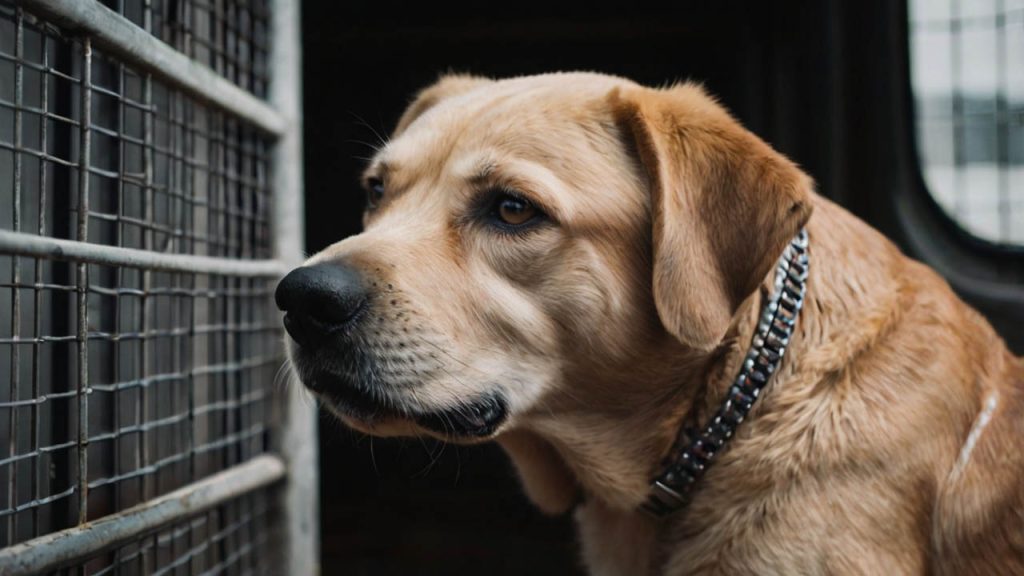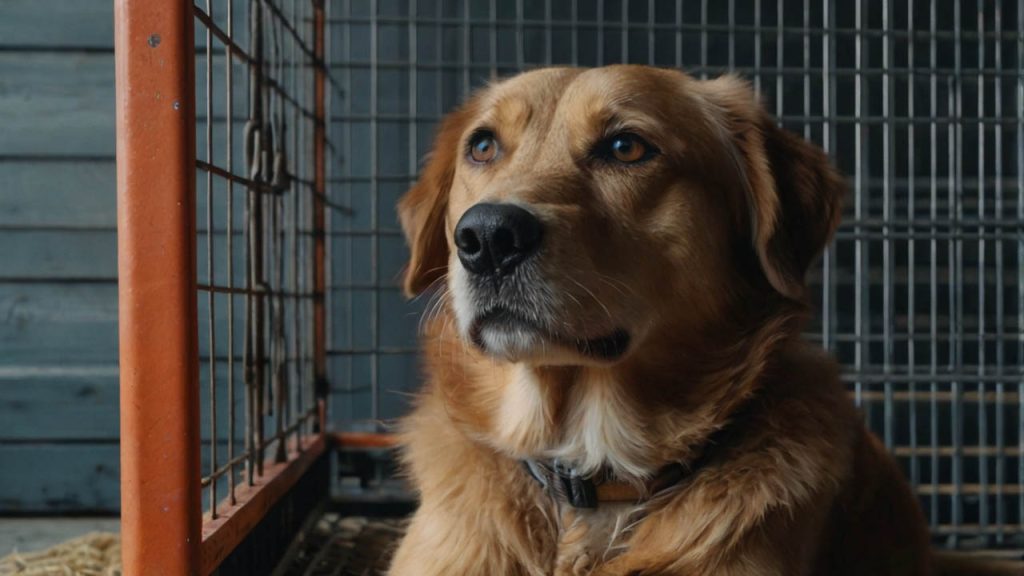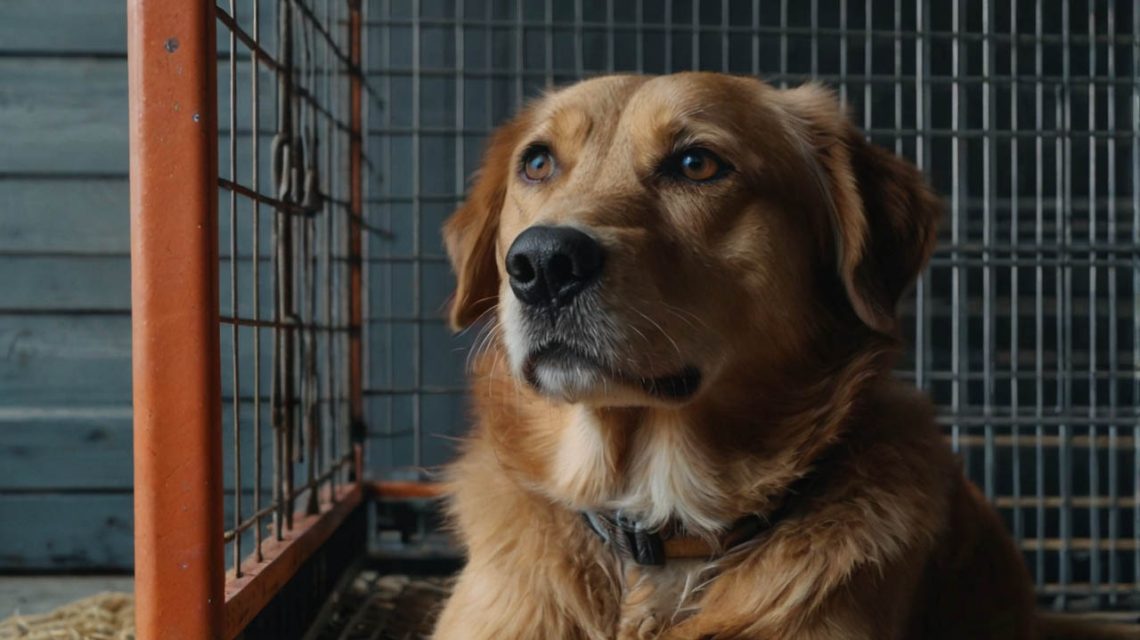Introduction: Crate Training Adult and Senior Dogs Successfully
Learning how to crate train an older dog presents unique challenges compared to puppy training, yet remains entirely achievable with patience and the right approach. According to the American Kennel Club, adult dogs can successfully learn crate training at any age, though the process typically requires 2-6 weeks longer than with puppies. Moreover, research from certified animal behaviorists shows that over 85% of older dogs successfully adapt to crate training when owners use positive reinforcement methods consistently.
The necessity of understanding how to crate train an older dog often arises from life changes such as adoption, moving homes, travel requirements, or medical needs. Studies from the Association of Professional Dog Trainers indicate that rescue dogs particularly benefit from crate training, as it provides security and helps establish routine in new environments. Furthermore, older dogs recovering from surgery or managing incontinence find crates invaluable for safe confinement and house training reinforcement.
Successfully implementing strategies for mature dogs requires recognizing that adult dogs bring established behaviors, potential past traumas, and physical limitations that puppies don’t have. Each older dog’s history influences their crate training journey, whether they’re newly adopted seniors or long-time family members needing new skills. Therefore, this comprehensive guide provides specialized techniques, troubleshooting strategies, and patience-building approaches specifically designed for mature dogs’ unique psychological and physical needs.
Why Learning How to Crate Train an Older Dog Matters
Benefits for Senior and Adult Dogs
Understanding how to crate train an older dog provides numerous advantages beyond simple containment. Crates offer safe spaces where anxious dogs can retreat during stressful situations like thunderstorms or houseguests. Subsequently, dogs with properly introduced crates show 40% less anxiety-related behaviors according to veterinary behaviorist research.
Medical management becomes significantly easier when implementing proper crate training techniques. Post-surgical recovery requires restricted movement that crates provide safely. Furthermore, senior dogs with cognitive dysfunction benefit from crate routines that provide structure and reduce confusion-related anxiety.
Travel safety improves dramatically through proper crate training. Airlines require crate familiarity for pet travel, and car travel becomes safer with secured crates. Moreover, emergency evacuations proceed more smoothly when dogs willingly enter and remain calm in crates.

Overcoming Age-Related Challenges
Successfully addressing physical limitations common in mature dogs requires special considerations. Arthritis affects 80% of dogs over age 8, requiring crate modifications like orthopedic bedding and easy-entry designs. Additionally, vision or hearing impairments necessitate consistent crate placement and clear verbal or physical cues.
Previous negative experiences complicate the learning process for rescue dogs. Some older dogs associate crates with abandonment, long-term confinement, or punishment. Research shows that dogs with crate trauma require 3-4 times longer to develop positive associations, demanding exceptional patience from owners.
Established habits in older dogs create resistance to new routines. Adult dogs accustomed to sleeping on furniture or having house freedom may initially reject crate confinement. Therefore, gradual introduction and high-value incentives prove essential for overcoming ingrained preferences.
How to Crate Train an Older Dog: Essential Preparation
Selecting the Right Crate
Choosing appropriate equipment when learning how to crate train an older dog significantly impacts success rates. Size requirements differ from puppies since adult dogs won’t grow larger. The crate should allow standing, turning, and lying down comfortably without excess space that might encourage elimination.
Material selection depends on your dog’s specific needs and behaviors. Wire crates provide maximum ventilation and visibility, benefiting dogs who feel less confined with open views. Plastic crates offer more den-like security for anxious dogs, while furniture-style crates blend with home décor for permanent placement.
Accessibility features become crucial for senior dogs with mobility issues. Low-entry doors or removable tops facilitate easier access for arthritic dogs. Furthermore, non-slip flooring prevents injuries, and adequate ventilation ensures comfort during extended rest periods.
Creating Positive First Impressions
Beginning the training process requires establishing the crate as a rewarding space before any confinement. Place the crate in a family area where your dog naturally spends time. Subsequently, leave doors open or removed initially, allowing voluntary exploration without pressure.
High-value items make crates irresistibly attractive to older dogs. Feed all meals near, then inside the crate, creating powerful positive associations. Moreover, special treats or favorite toys appearing only in crates build anticipation and desire to enter.
Scent marking helps older dogs claim crates as personal territory. Rubbing towels on your dog then placing them inside transfers familiar scents. Additionally, unwashed bedding from their usual sleeping area provides comfort and ownership feelings.
Step-by-Step Guide: How to Crate Train an Older Dog
Week 1: Introduction and Familiarization
Starting how to crate train an older dog begins with completely voluntary interaction. Toss treats near the crate, praising any interest or approach. Gradually move treats closer, then just inside the entrance, rewarding brave exploration without forcing entry.
Mealtime integration accelerates positive associations naturally. Place food bowls near crates initially, moving them progressively closer over several days. By week’s end, dogs should eat comfortably with bowls inside crates, doors remaining open throughout meals.
Short, successful interactions build confidence better than prolonged attempts. Multiple 2-3 minute positive sessions throughout the day prove more effective than single lengthy training periods. Furthermore, ending sessions while dogs remain relaxed prevents negative associations from developing.
Week 2-3: How to Crate Train an Older Dog with Duration
Advancing training involves gradually increasing time spent inside. Begin closing doors briefly while dogs eat, opening immediately upon finishing. Subsequently, extend door closure by 30-second increments, remaining visible and calm nearby.
Distraction techniques help dogs relax during longer confinement periods. Puzzle toys, frozen Kong treats, or long-lasting chews occupy attention while building duration tolerance. Research indicates dogs engaged with enrichment activities develop positive crate associations 50% faster.
Strategic timing maximizes success when building duration. Practice after exercise when dogs naturally seek rest, not during high-energy periods. Moreover, avoid crating immediately after outdoor access, as bathroom needs may cause distress and setbacks.
Week 4: Establishing Routine
Mastering long-term success requires consistent daily scheduling. Establish specific crate times like during meals, household chores, or quiet afternoon periods. Subsequently, predictable routines reduce anxiety and increase willing compliance.
Gradual alone-time training prevents separation anxiety development. Practice leaving rooms briefly while dogs remain crated, returning before distress occurs. Furthermore, vary absence duration to prevent anticipation anxiety about departure length.
Overnight success often comes last when crate training older dogs. Many adult dogs resist nighttime crating initially, preferring established sleeping arrangements. Therefore, consider starting with daytime crating only, introducing overnight confinement after complete daytime comfort develops.
Advanced Techniques: How to Crate Train an Older Dog with Anxiety
Dealing with Severe Anxiety
Severe anxiety requires modified approaches when implementing how to crate train an older dog with fear issues. Desensitization protocols involve treating dogs for simply looking at crates from distance. Gradually decrease distance over days or weeks, rewarding calm behavior at each stage.
Calming aids support anxious dogs during crate training. Pheromone diffusers like Adaptil create calming environments around crates. Additionally, calming supplements or prescription medications from veterinarians may help extreme cases, though behavioral modification remains primary treatment.
Alternative confinement options may precede crate training for severely anxious dogs. Exercise pens or baby-gated rooms provide stepping stones toward crate acceptance. Moreover, some dogs benefit from crate training alongside confident, crate-trained dogs who model calm behavior.
Managing Physical Limitations
Arthritis modifications ensure comfort when working with joint issues. Memory foam bedding reduces pressure points, while heating pads provide soothing warmth. Furthermore, ramps assist dogs entering elevated crates without painful jumping.
Vision-impaired dogs require special considerations during crate training. Maintain consistent crate placement to prevent disorientation, and use textured mats leading to entrances. Additionally, verbal cues become primary communication tools, replacing visual signals.
Cognitive dysfunction in senior dogs affects crate training success. Dogs with dementia may forget crate training between sessions, requiring infinite patience. Research suggests shorter, more frequent positive experiences help cement learning in cognitively impaired dogs.

Troubleshooting: How to Crate Train an Older Dog Successfully
Common Problems and Solutions
Barking or whining in crates frustrates owners learning how to crate train an older dog properly. Attention-seeking vocalizations require complete ignoring until quiet, then immediate reward. However, distress vocalizations indicate moving too quickly through training stages.
Elimination accidents inside crates suggest various issues requiring different solutions. Medical problems need veterinary attention before continuing training. Subsequently, ensure crates aren’t too large, and adjust feeding/watering schedules to prevent accidents.
Escape attempts indicate improper crate introduction or severe anxiety. Dogs injuring themselves trying to escape need immediate training plan revision. Furthermore, stronger crates may be necessary for determined escape artists, though addressing underlying anxiety remains paramount.
Regression Management Strategies
Setbacks occur normally during the training process. Stressful events, routine changes, or illness can trigger temporary regression. Moreover, patience during setbacks prevents permanent training damage.
Restarting training from earlier stages helps overcome regression. Return to feeding treats near crates or leaving doors open if dogs develop sudden reluctance. Additionally, identify and address potential triggers causing behavioral changes.
Consistency among household members prevents confusion undermining training. Everyone must follow identical protocols and commands when crate training. Furthermore, mixed messages from different family members create anxiety and slow progress significantly.
Special Considerations for Rescue Dogs
How to Crate Train an Older Dog with Past Trauma
Rescue dogs often require specialized approaches when learning how to crate train an older dog with unknown histories. Previous negative experiences may include excessive crating, punishment associations, or abandonment trauma. Therefore, extra patience and modified techniques prove essential.
Building trust precedes crate introduction for traumatized dogs. Spend weeks establishing general confidence through positive training before introducing crates. Moreover, forcing traumatized dogs into crates can trigger panic responses setting training back months.
Alternative crate styles may help dogs with specific trauma associations. Dogs fearful of wire crates might accept soft-sided versions, or vice versa. Additionally, completely different locations from previous trauma help create fresh associations.
Shelter Dog Adjustment Period
Recently adopted dogs need time before starting formal training protocols. The “3-3-3 rule” suggests three days for decompression, three weeks for routine learning, and three months for complete comfort. Subsequently, premature crate training can overwhelm already stressed dogs.
Shelter dogs may have developed crate soiling habits from necessity. Long confinement periods without potty breaks force elimination in living spaces. Furthermore, breaking these established patterns requires patient reconditioning and frequent bathroom opportunities.
Competition anxiety from shelter environments may affect crate training. Dogs resource-guarding crates need individual training away from other pets initially. Moreover, gradual introduction to household pets sharing nearby crates prevents territorial conflicts.
Creating Long-Term Success
How to Crate Train an Older Dog: Maintenance Strategies
Sustaining success after initial training requires ongoing positive associations. Continue providing special treats or toys exclusively in crates maintaining appeal. Furthermore, avoid using crates for punishment, which destroys carefully built positive associations.
Gradual freedom increases prevent abandoning crate training completely. Even well-trained dogs benefit from occasional crate time maintaining familiarity. Additionally, life changes like moving or veterinary procedures become less stressful with maintained crate comfort.
Regular crate maintenance ensures continued comfort and safety. Check for sharp edges, worn bedding, or size inadequacy as dogs age. Moreover, adjusting crate setups for changing physical needs maintains positive associations throughout senior years.
Daily Life Integration
Successfully incorporating crates into routines means seamlessly blending them into household patterns. Crates near family areas allow inclusion while providing boundaries. Furthermore, portable crates enable consistent safe spaces during travel or visits.
Multiple crate locations benefit dogs spending time in different house areas. Bedroom crates for nighttime and living area crates for daytime provide options. Additionally, outdoor crates offer safe containment during yard work or gatherings.
Crate games maintain positive associations while providing mental stimulation. Hide treats for dogs to find, or play “crate races” where dogs run to crates on cue. Moreover, these activities strengthen training while keeping experiences enjoyable.
Success Stories: How to Crate Train an Older Dog
Real-World Transformations
Max, a 7-year-old rescue Labrador, exemplifies successful implementation of how to crate train an older dog. Initially terrified of confinement, Max required three months of patient desensitization. Through gradual exposure and high-value rewards, Max now voluntarily naps in his open crate. His anxiety during thunderstorms decreased 70% with his safe crate space available.
Bella, a 10-year-old Beagle, needed crate training for post-surgery recovery. Despite never using crates previously, Bella learned within two weeks through positive association techniques. Her owner’s consistent meal-feeding inside the crate created powerful positive connections. Subsequently, Bella’s smooth recovery avoided complications from excessive movement.
Charlie, a 12-year-old Border Collie with cognitive dysfunction, demonstrates that senior dogs can learn new skills. Despite confusion and memory issues, Charlie developed crate comfort through repetitive positive experiences. His sundowning symptoms improved with structured crate rest periods. Furthermore, his owners report better overall management of his condition.
Professional Training Insights
Dr. Patricia McConnell, certified animal behaviorist, emphasizes patience when teaching older dogs new skills. Her research shows older dogs learning at individual paces, with some requiring months versus weeks. Moreover, she advocates for celebrating small victories throughout training processes.
Professional trainer Victoria Stilwell notes that older dogs often train more reliably than puppies once learning occurs. Adult dogs’ longer attention spans and established communication with owners facilitate training. Additionally, she recommends adjusting expectations based on individual dog histories and limitations.
Veterinary behaviorist Dr. Karen Overall stresses medical evaluation before crate training older dogs. Underlying pain, cognitive issues, or anxiety disorders affect training success. Furthermore, addressing medical issues first dramatically improves training outcomes and welfare.
Health and Safety Considerations
Medical Factors When Learning How to Crate Train an Older Dog
Understanding health impacts ensures safe, comfortable experiences during training. Arthritis affects crate positioning preferences, with some dogs preferring elevated surfaces. Subsequently, providing options helps dogs choose most comfortable positions.
Incontinence issues complicate crate training for senior dogs. Waterproof bedding protects crate floors while maintaining comfort. Moreover, more frequent bathroom breaks and veterinary consultation address underlying causes.
Medication timing affects crate training sessions. Some medications cause drowsiness, making post-medication training ideal for calm associations. Additionally, pain medications should be administered before training sessions involving physical movement.
Environmental Modifications
Temperature control becomes crucial when crate training older dogs with decreased thermoregulation. Cooling mats prevent overheating in summer, while heating pads provide winter warmth. Furthermore, adequate ventilation ensures comfort during extended crate periods.
Noise sensitivity increases with age, affecting crate placement decisions. Locate crates away from loud appliances or high-traffic areas causing stress. Additionally, white noise machines or calming music can mask disturbing sounds.
Lighting considerations help older dogs with vision changes navigate crates safely. Night lights near crate entrances prevent disorientation during nighttime bathroom trips. Moreover, consistent lighting helps dogs with cognitive dysfunction maintain day/night awareness.
Conclusion: Your Path to Successful Older Dog Crate Training
Mastering how to crate train an older dog opens doors to improved safety, reduced anxiety, and better quality of life for mature dogs and their owners. Throughout this comprehensive guide, you’ve discovered that age presents no barrier to learning when approached with patience, understanding, and appropriate techniques. The journey may take longer than puppy training, but the benefits—from medical management to travel convenience—make the investment worthwhile.
Remember that every older dog brings unique histories, physical considerations, and learning speeds to crate training. Some dogs embrace crates within days, while others need months of gentle encouragement. Your commitment to positive methods, consistent practice, and respect for your dog’s individual needs determines ultimate success.
Take action today by assessing your older dog’s specific needs and selecting an appropriate crate. Begin with simple positive associations, feeding treats near the crate without any pressure to enter. Most importantly, commit to patience and celebrate small victories, knowing that your efforts to how to crate train an older dog will provide them with a valuable life skill and safe haven for their remaining years.


